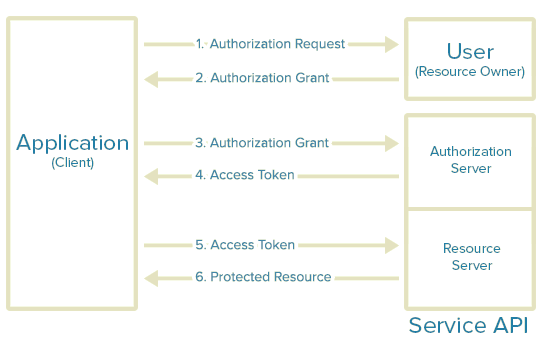OAuth 2 overview
This article assumes that readers are familiar with OAuth 2. However, below a brief description of it is presented below.

- The application requests authorization to access service resources from the user. The application needs to provide the client ID, client secret, redirect URI and the required scopes.
- If the user authorizes the request, the application receives an authorization grant
- The application requests an access token from the authorization server by presenting authentication of its own identity, and the authorization grant
- If the application identity is authenticated and the authorization grant is valid, the authorization server issues the access and refresh (if required) token to the application. Authorization is complete.
- The application requests the resource from the resource server and presents the access token for authentication
- If the access token is valid, the resource server serves the resource to the application
The are some main Pros and Cons in OAuth 2.0
+OAuth 2.0 is easier to use and implement (compared to OAuth 1.0)
+Wide spread and continuing growing
+Short lived Tokens
+Encapsulated Tokens
-No signature (relies solely on SSL/TLS ), Bearer Tokens
-No built-in security
-Can be dangerous if used from not experienced people
-Too many compromises. Working group did not make clear decisions
-Mobile integration (web views)
-Oauth 2.0 spec is not a protocol, it is rather a framework — RFC 6749
